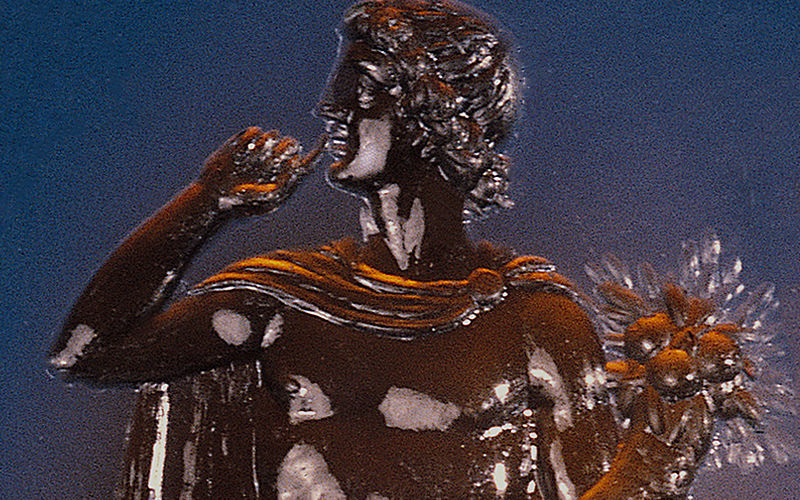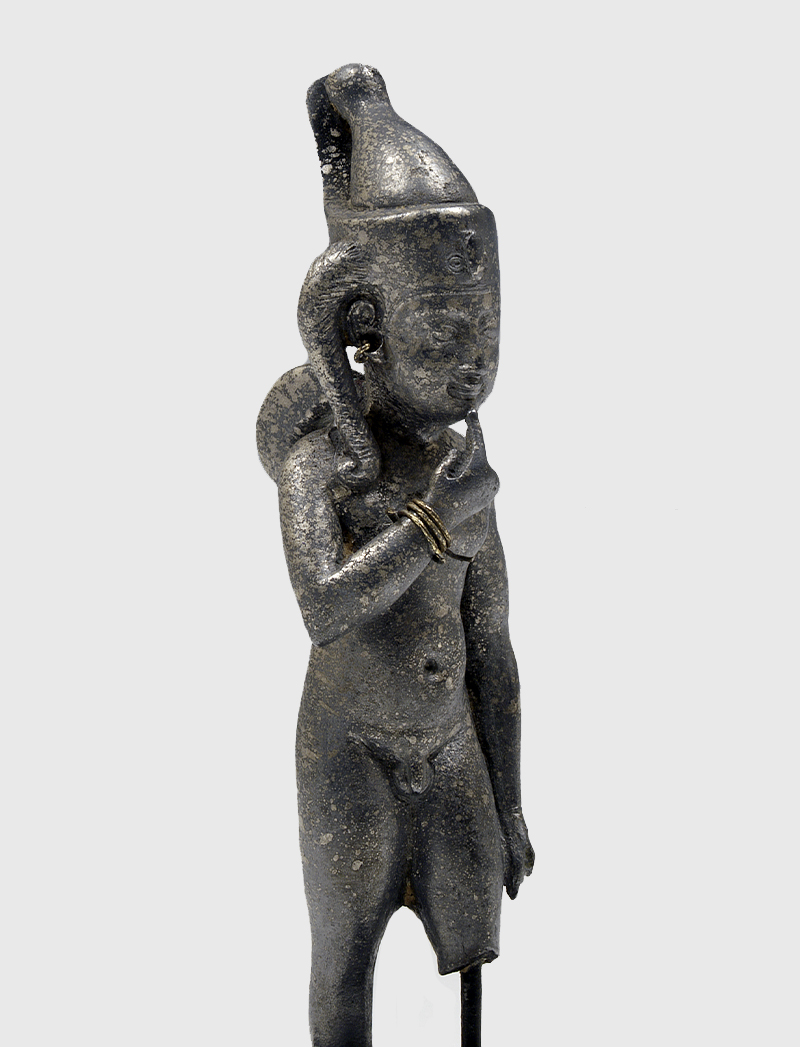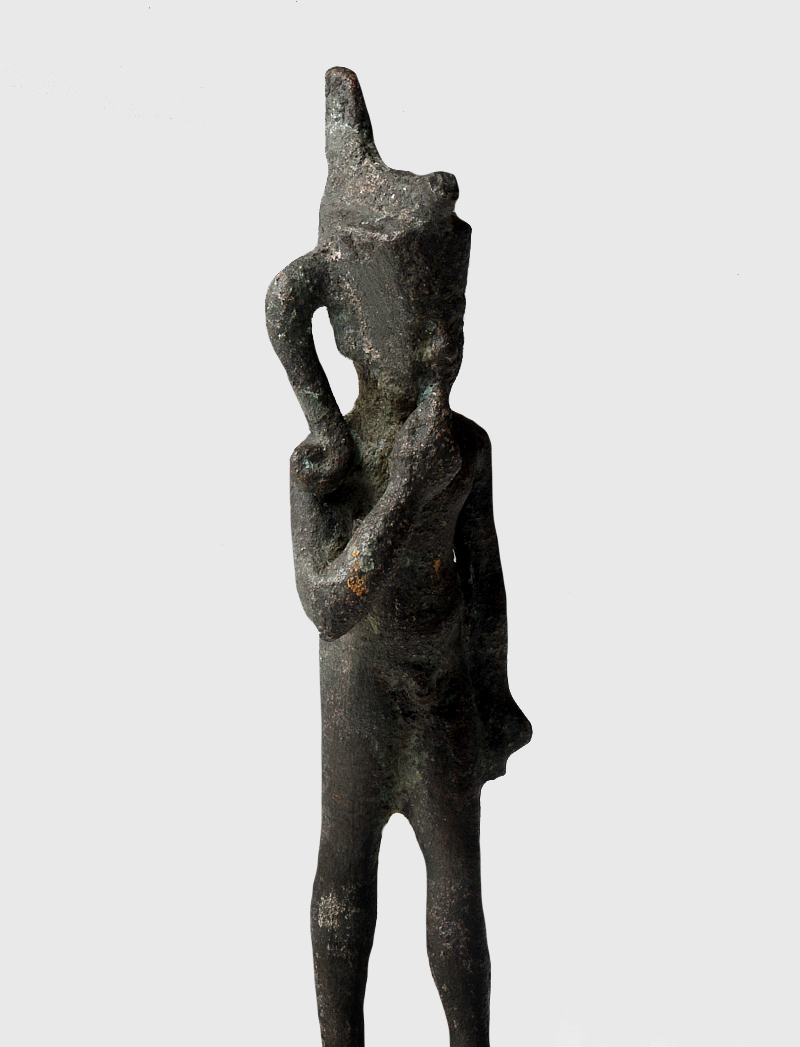Harpocrates

Harpocrates was the god of silence in the Hellenistic religion, adapted by the Greeks from the god Horus, who in Egypt represented the rising sun. Harpocrates took on the childish image of Horus: he was usually depicted as a naked child, holding his right index finger to his mouth – while the Egyptians believed that this gesture symbolised childhood, the Greeks understood it as a reference to the sign for silence – using the double crown of Upper and Lower Egypt and wearing a side braid.
The name Harpocrates was an adaptation of an Egyptian word that literally translated to Horus, the child. Like his adult version, the god also symbolised the rising sun and the first strength of the winter sun.
While several contradictory theories exist, the most common is that Harpocrates was the son of Isis and Osiris and that he was born prematurely, with lame legs. There are many representations of the god together with his mother, the most common image being of him nursing.
One of the symbols associated with the god Harpocrates was the rose: the expression sub rosa is used to mean confidentiality. The flower was often found painted on the ceilings of Roman banquet halls, suggesting that whatever was discussed there under the influence of wine should be kept secret. It was also customary to hang a rose on the door of councils during the Middle Ages, as a token of secrecy of the decisions made therein.
Statuettes or bas-reliefs representing Harpocrates, alone or with Isis, can be found in several international museums, like the British Museum, in London, and the Louvre, in Paris. There are two statuettes of Harpocrates in Gulbenkian’s Egyptian collection, one of which is little known, because it is usually in the reserves. The small bronze figure represents the god with his usual attributes and would have had a funerary function.
The second is a silver statuette, dated 305–30 B.C., displayed in the gallery of Egyptian art of the Calouste Gulbenkian Museum. Gulbenkian acquired this work in 1922 through Egyptologist Howard Carter, who became famous for discovering the tomb of Tutankhamun. The piece includes the symbols of the god and would have been used as an amulet, with a ring on the back for hanging it.


Gulbenkian also acquired a gem with the image of Harpocrates, in 1898, which is now part of the Greco-Roman art section of the Museum. Shaped like an oval, it was carved from agate and used in a ring.
A Collection of Stories
On a weekly basis, we shared a story around Calouste Gulbenkian’s collection. This section was created in 2020, which is why the articles refer to the Calouste Gulbenkian Museum collection as the Founder’s Collection.
Other stories